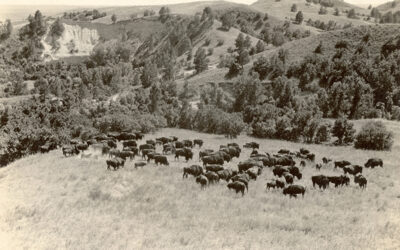
This year’s rainy season has been made more tolerable, and safer, thanks to flood control initiatives over the last 60 years. But on July 6, 1908, nearly seven inches of rain fell on the capital city, with 2.5 inches coming in one two-hour period. The creeks in the Salt Creek watershed became torrents.
How bad was it? The State Department of Natural Resources reports, “the peak discharge (rate of flow) was estimated at 30,650 cubic feet per second (13,755,720 gallons per minute); for reference, the average flow for early April is only 140 cubic feet per second.”
The “North Bottoms” –bottom land home to part of Lincoln’s Germans from Russia community–bore the brunt of the damage. O Street was flooded from 8th Street East to 24th Street West, according to the Nebraska State Journal. The entire Antelope valley was flooded south to G Street. Worst of all, nine people were killed, many houses were destroyed, and 1,000 people were made homeless.
Flooding in the eastern third of Nebraska in May of 1950 claimed another 14 lives. The U.S. Army Corps of Engineers built a series of lakes in the area to provide greater flood control. Even so, in 1993, water was so high the Bob Devaney sports complex required sandbagging for protection.



